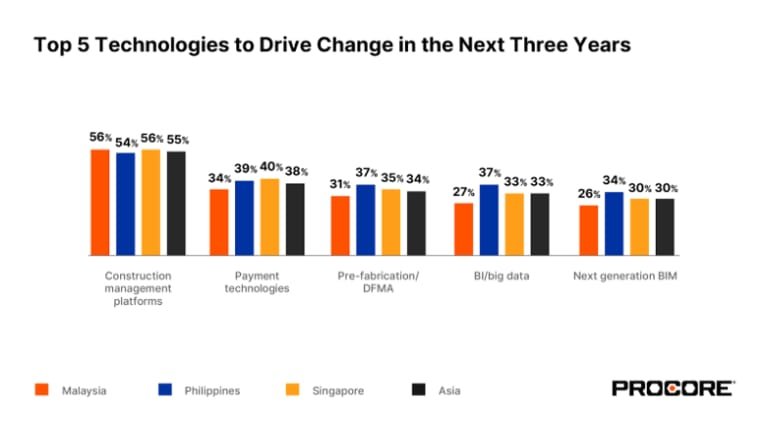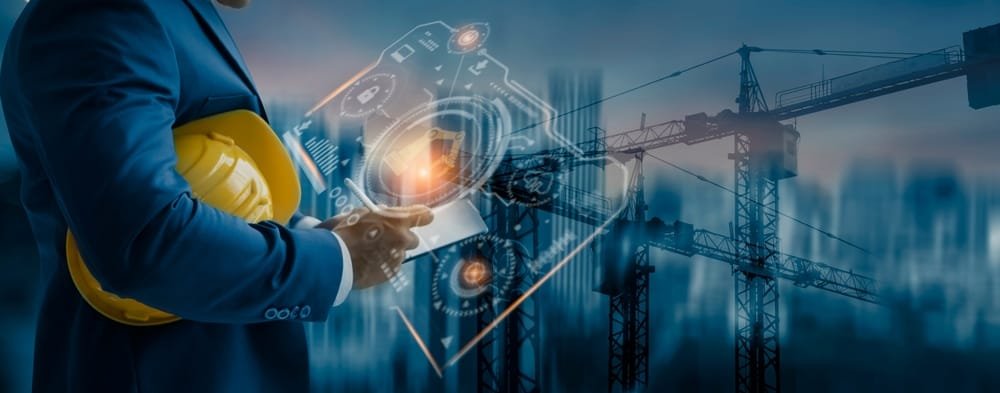Emerging technologies like AI, drones, and 3D printing are reshaping the construction industry in Southeast Asia. These advancements are helping to streamline project planning, reduce costs, and increase operational efficiency. As Southeast Asia undergoes rapid urbanization, the integration of such technologies is proving essential to meeting growing infrastructure demands. Let’s take a deeper dive into Technology in Southeast Asia Construction below!
Leveraging Data and AI for Asset Performance
Data is now central to construction and infrastructure planning. By gathering data from various sources, Southeast Asia’s construction sector is better positioned to optimize assets and prevent costly malfunctions. In Singapore, for instance, the Land Transport Authority (LTA) is implementing the Rail Enterprise Asset Management System (REAMS), a data-driven tool that predicts asset failures and monitors infrastructure health. This shift from reactive to preventive maintenance is helping reduce operating costs and downtime, allowing Southeast Asia’s infrastructure to reach its full potential.

Additionally, AI-powered solutions offer invaluable insights into asset conditions. When combined with smart sensors, AI helps monitor project health in real time, allowing engineers to make informed decisions quickly. This Technology in Southeast Asia Construction is critical for increasing the lifespan of infrastructure assets and ensuring project efficiency.
Drones and Robotics Technology in Southeast Asia Construction
Drones are gaining traction across Southeast Asia for their ability to survey and inspect construction sites efficiently. These devices offer a bird’s-eye view of complex structures and provide high-quality images that aid in assessing project progression. In rail maintenance, drones save time and reduce safety risks for engineers by enabling faster tunnel inspections. By capturing real-time data, drones Technology in Southeast Asia Construction reduce the need for manual checks. As a result, it helps lowering costs.
Robotics is also stepping into the scene. By automating repetitive tasks, robots streamline workflows and reduce the need for labor, which is particularly beneficial given the industry’s workforce shortages. With fewer workers required on-site, project managers can better control expenses, further driving efficiency.
Prefabrication and 3D Printing Technology in Southeast Asia Construction
Prefabrication and 3D printing are revolutionizing construction in Southeast Asia. Prefabrication, where components are assembled off-site, speeds up construction timelines and maintains consistent quality. The Singapore Housing Development Board (HDB) has adopted this method, building over 80% of Singapore’s public housing with prefabricated components. By manufacturing elements in a controlled environment and assembling them on-site, HDB is meeting the demand for affordable housing more effectively.
3D printing takes this a step further, enabling the creation of highly customizable building components. This Technology in Southeast Asia Construction supports intricate designs and reduces material waste. So it’s no wonder this method is an attractive option for eco-friendly construction. In a region facing rapid urbanization, 3D printing helps meet the high demand for housing and infrastructure without incurring additional costs.
Digital Twins and Building Information Modeling (BIM)
Digital twins and Building Information Modeling (BIM) are two innovations that have transformed the way construction projects are planned and executed in Southeast Asia. A digital twin is a virtual model that mirrors the physical asset, allowing developers to simulate potential scenarios before construction begins. This predictive modeling reduces the risk of errors and costly rework, providing significant savings in time and resources.
BIM, a technology for creating 3D models, brings collaboration to a new level by allowing stakeholders to design, construct, and maintain buildings within a shared digital environment. The integration of AR and VR Technology in Southeast Asia Construction enhances BIM further. This is enabling stakeholders to visualize structures before physical construction even begins.
Sustainable Infrastructure and Resource Efficiency
Environmental concerns are driving the adoption of sustainable practices and Technology in Southeast Asia Construction sector. BIM facilitates lean construction, helping minimize waste and optimize resources. Countries like Malaysia are using BIM to design green buildings in line with the Green Building Index (GBI) standards. Additionally, Southeast Asian city planners are leveraging data to make eco-conscious infrastructure decisions that enhance the region’s sustainability.
As Southeast Asia continues to embrace these technologies, construction is evolving into a more efficient, cost-effective, and environmentally friendly industry. The integration of AI, drones, 3D printing, and BIM enables a smarter approach to building. Hence, new Technology in Southeast Asia Construction supports rapid urbanization while minimizing costs and maximizing quality.

